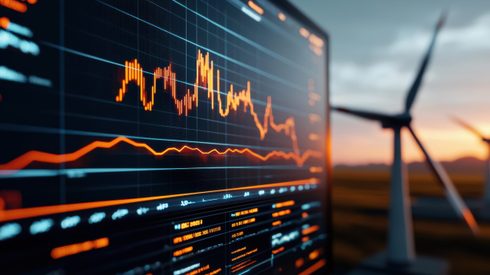A US executive order titled “Protecting American Energy from State Overreach” was issued on Wednesday. The directive instructs the Attorney General to identify and potentially challenge state-level climate and energy regulations that may exceed federal authority or conflict with national energy priorities. The order states the Attorney General should prioritize identifying any state laws that address climate change, involve environmental, social and governance initiatives, environmental justice, carbon or greenhouse gas emissions, and funds to collect carbon penalties or carbon taxes.
“All appropriate action” should then be taken to stop the enforcement of such state laws that the Attorney General deems illegal. The Attorney General has 60 days to submit a report to the president including their findings and any additional presidential or legislative action required.
Following the announcement, California Carbon Allowance (CCA) futures on ICE fell by over 24%, underscoring broader investor concerns around climate policy direction and future demand in compliance markets.
Under current rules, California allows compliance entities to use California Air Resources Board (ARB) Offset Credits – issued under approved protocols by registries such as ACR – to meet up to 4% of their emissions obligations from 2021 to 2025, rising to 6% from 2026 to 2030. While these thresholds remain unchanged, market participants are reassessing the regulatory risk profile of IFM credits tied to state-led programs.
Over 250 million tonnes of CO2 equivalent (tCO2e) of offset credits have been issued under ARB compliance or early action across ACR, Climate Action Reserve (CAR) and Verra, of which over 115 million tCO2e are from ACR-issued forestry projects.
Uncertainty over state-level carbon taxes leaves developers cautious
A fall in CCA prices could weigh on demand and prices for offset credits under the scheme, while uncertainty over state-level carbon taxes and trading is likely to leave some developers cautious, as the move raises concerns about long-term policy alignment and the durability of state-driven climate governance.
In the spot market, trading activity remained thin. An offer was seen for the North Maine Woods (ACR 587) project with a 2021 vintage at $27 per tCO2e, unchanged from levels reported in March.
Offers for multiple Climate Action Reserve (CAR) issued Mexican IFM credits (CAR 1635, CAR 1638) were also reported at $15.70 per tCO2e for less than 10,000 tCO2e from vintages 2021–2022.
Retirements were similarly modest. A total of 100,000 credits were retired from The Kuamut Rainforest Conservation Project (VCS 2609) split evenly between the 2020 and 2021 vintages, though the identity of the retiring entity was not disclosed.
Older vintage 2019 credits from the project had been offered at $9.25 per tCO2e earlier in the first quarter. The project submitted a requantification notification form to Verra at the end of December 2024 to requantify its currently issued credits from vintages 2015–2021 under version 1.4 of the Verra VM0010 IFM methodology, from version 1.3 that they were initially issued under.
The new version allows for the tagging of removals and avoidance portions of credits from a project; however, no such tags have yet been placed on the project’s credits.
Separately, Austrian powder metallurgical materials company Plansee retired 28,964 avoidance credits from the Sylvania Forestry Project (ACR 681) from vintages 2021–2022. The company also retired 9,836 removals-tagged credits from the same project-vintage pair.
The market remains cautious amid a wait-and-watch stance due to low liquidity and shifting political and regulatory signals.
For in-depth coverage of these stories and access to regular updates, sign up for our free Fastmarkets Carbon Newsletter.





